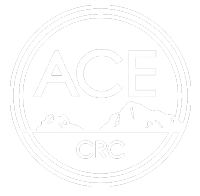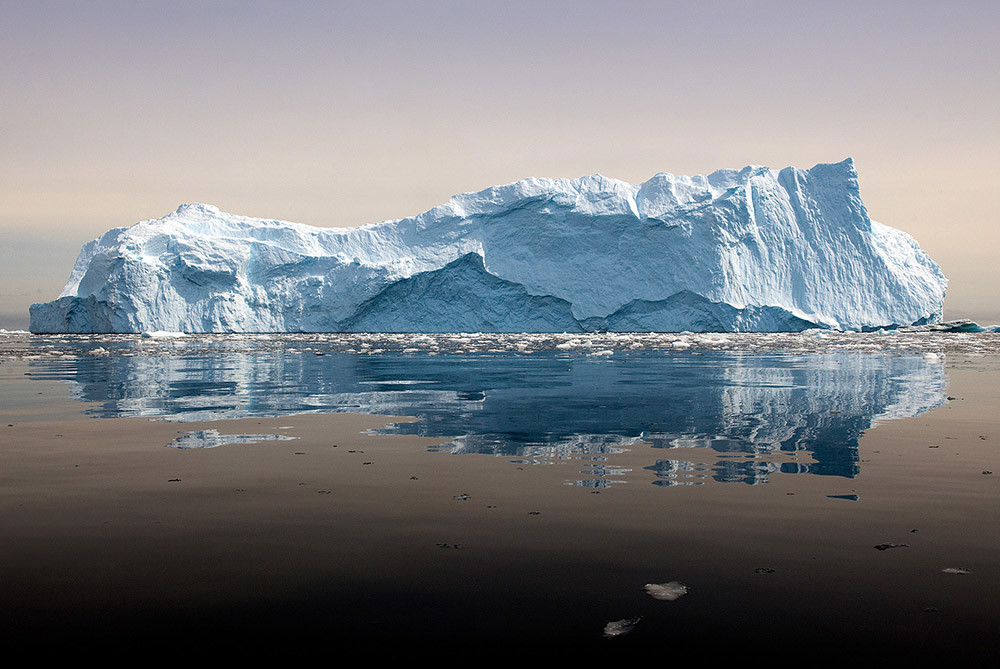ACE Project R1.2
Ocean Forced Evolution of the Antarctic Ice Sheet
The ACE CRC's Project R1.2 team is working to understand how the Antarctic ice sheet is responding to a warming ocean, to improve projections of future sea level.
The rate at which ice discharges from the Antarctic continent into the oceans is presently the greatest source of uncertainty in forecasts of global sea level rise. Recent observations suggest that the contribution to sea-level rise from the West Antarctic and the much larger East Antarctic ice sheet is increasing.
Reducing the uncertainty is important since the two great parts of Antarctica hold around 70 per cent of the world’s fresh water and more than 90 per cent of its ice. If the ice sheet melted completely, the global sea level would rise by about 60 meters.
The ACE CRC’s Ocean Forced Evolution of the Antarctic Ice Sheet project is working to provide public and private sector decision‐makers with improved information to guide informed policy decisions on sea level rise mitigation and adaptation. To achieve this, researchers are working to understand how the Antarctic ice sheet is likely to respond to a warming ocean, and which regions face the greatest risk of increased ice discharge.
The project employs a wide variety of methodologies from field surveys of the Antarctic ice sheet to computer modelling of complex ocean-ice sheet interactions. The scientific insights gained through this research are helping to improve the accuracy of ice-sheet computer models, and provide more reliable projections of future sea level.
Technical Details (Click to Expand)
Background
The rate of ice loss from the Antarctic ice sheet is determined by a combination of several factors, including the shape of the bedrock, the ice flow dynamics and forcing terms, such as surface accumulation, calving and basal melt. The ocean driven basal melting has the largest influence over the mass budget of ice shelves and has been implicated as the reason for thinning and recent accelerated rates of ice discharge, but the future response of the Antarctic ice sheet to ocean warming is not known. The main project outcome is mitigation and adaptation planning of future climate guided by better knowledge of the future contribution of the Antarctic ice sheet to sea level rise.
Project R1.2 aims to provide:
• Improved assessment of present and future rates of grounded ice discharge (and sea level contribution) and sensitivity to ice flow across grounding lines due to changes in ice shelves;
• Improved physical understanding of the mechanisms controlling rates of ice loss from ice shelves (basal melting and calving);
• Assessment of the potential for the ocean to melt ice shelves at key East Antarctic glaciers;
• Assessment of the dynamic response of the Antarctic Ice Sheet to changes in climate;
• Identification of regions of potential vulnerability to grounding zone retreat on a range of timescales and provide estimates of limits to future sea level rise.
Methodology
The approach is interdisciplinary and relies on ocean, ice and airborne observations (in situ and remotely sensed), interpreted together with laboratory studies of the mechanics of ice and the use of predictive numerical modelling to consider the dynamic response of the ice sheet occurring as a direct result of changes to the ocean climate. Key research activities include:
• A coincident/joint land and sea campaign focussed on the Totten and Mertz glacier regions, including ice observing systems of both the grounded and floating portions of the glaciers and ocean observations of both the sub-ice shelf and open ocean.
• Integrated ice shelf studies that are a continuation of previous studies of ice/ocean interactions and rifting/calving processes through ice deployed instruments, analysis of ice observations, modelling synthesis and laboratory studies of ice rheology.
• Completion of a large-scale survey of East Antarctica (ICECAP) providing improved knowledge of ice sheet/ice shelf geometry and state and rate of change of the ice sheet, together with measurements of velocity change, ice shelf basal melt rates, ice shelf thickness and change, and bedrock uplift.
• Determine the ocean state and longer term variability in oceanic heat transport from offshore to the base of the ice shelves and basal melt rates using available observations together with numerical modelling providing synthesis and model evaluation.
• Assess the state and rate of change of the Antarctic ice sheet (and hence sea level) for the recent past and future scenarios using coupled modelling.
PROJECT TEAM
Links
Antarctic ice shelves thinning more rapidly than scientists thought, research published in Science shows, Bridget Brennan, ABC PM. 27 March 2015
Fears sea levels could rise as ‘concerned’ scientists find signs huge Antarctic glacier is melting, Lauren Day, ABC News Online, 17 March 2015.
Marine-based Ice Sheet Ocean Model Inter-comparison Project, led by David Holland, New York University Abu Dhabi.
Major Antarctic ice survey reveals dramatic melting, Michael Slezak. New Scientist. 26 March 2015.
Key Publications
Gwyther, D. E., Galton-Fenzi, B. K., Hunter, J. R., and Roberts, J. L. Simulated melt rates for the Totten and Dalton ice shelves, Ocean Science, 10, 267-279, doi:10.5194/os-10-267-2014, 2014.
D. A. Young, A. P. Wright, J. L. Roberts, R. C. Warner, N. W. Young, J. S. Greenbaum, D. M. Schroeder, J. W. Holt, D. E. Sugden, D. D. Blankenship, T. D. van Ommen & M. J. Siegert. A dynamic early East Antarctic Ice Sheet suggested by ice-covered fjord landscapes. Nature, Volume 474, pages 72–75. 2011. doi:10.1038/nature10114.
J. S. Greenbaum, D. D. Blankenship, D. A. Young, T. G. Richter, J. L. Roberts, A. R. A. Aitken, B. Legresy, D. M. Schroeder, R. C. Warner, T. D. van Ommen & M. J. Siegert. Ocean access to a cavity beneath Totten Glacier in East Antarctica. Nature Geoscience, doi:10.1038/ngeo2388. 2015.
Y. Liu, J. C. Moore, X. Cheng, R. M. Gladstone, J. N. Bassis, H. Liu, J. Wen, and F. Hui. Ocean-driven thinning enhances iceberg calving and retreat of Antarctic ice shelves. Proceedings of the National Academy of Sciences. Volume 112, issue 11. pages 3263–3268, doi: 10.1073/pnas.1415137112, 2015.
R. Timmermann, A. Le Brocq, T. Deen, E. Domack, P. Dutrieux, B. Galton-Fenzi, H. Hellmer, A. Humbert, D. Jansen, A. Jenkins, A. Lambrecht, K. Makinson, F. Niederjasper, F. Nitsche, O. A. Nøst, L. H. Smedsrud, and W. H. F. Smith. A consistent data set of Antarctic ice sheet topography, cavity geometry, and global bathymetry. Earth System Science Data, Volume 2, pages 261-273, 2010. doi:10.5194/essd-2-261-2010




























